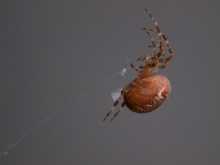There have been a few Herculean hurdles in the quest to be able to create spider-silk fibers on a massive scale. Although geneticists have been able to isolate the proteins within a spider’s silks (in fact, they’re so good that they can even genetically customize the silks for different properties), they have not been able to figure out how to turn them into fibers.
One option was to simply farm spiders, but they are notoriously territorial and given to eating one another. Creating the fibers synthetically in a lab has also been difficult because, although the proteins can be created, there’s never been a consistant, cost-effective way to string them together.
Recently, some enterprising scientists have taken the liberty of genetically altering other animals that also spin silk: silkworms. For centuries people from China to the Mediterranean have been farming silkworms for their silk fibers. Those fibers are woven together to make everything from silk kimonos to handkerchiefs. Silkworms are silk-spinning machines, with enormous glands that constantly excrete the sought-after fibers. By genetically modifying silkworms, scientists have been able to modify the insects to spin a hybridized silk, though it only contains 2 to 5 percent of the genetic material of a spider’s silk. However, even with such a small tweak to the genetic code, and although it lacked the strength or elasticity, the silks were found to have almost the same toughness as a spider’s silk The next step will be to phase out the spiderworm’s silk proteins altogether, until the silkworms are only spinning spider silk.
Imagine a fabric that is stronger than steel, tougher than Kevlar, but with the elasticity of the waistband in your sweatpants? Mass-produced and cheaply available, this material could drastically change industries as varied as shipping and transportation to housing and textiles. Some have even looked at how synthetic spider silk might change our concept of space travel, with an “elevator” strong enough to payload out of our planet’s orbit like the world’s longest bucket on a rope.
